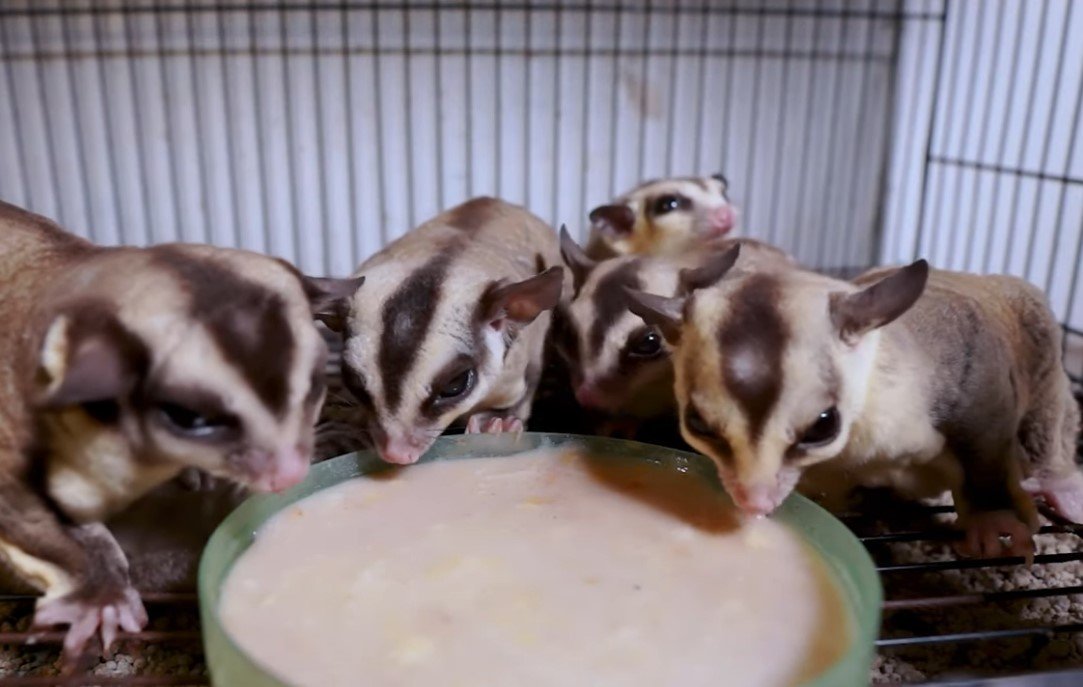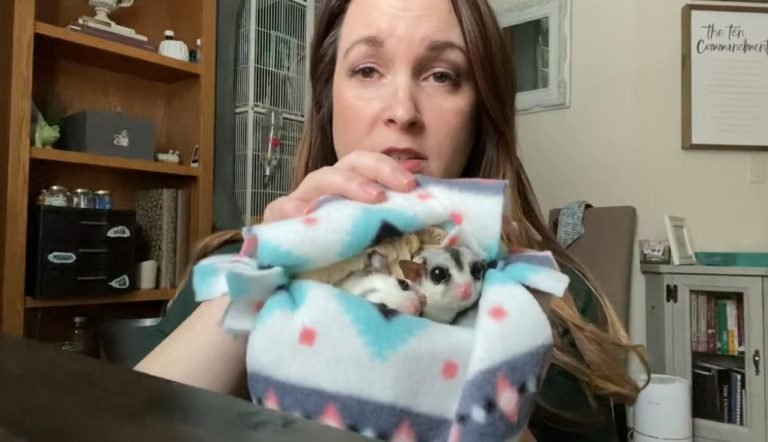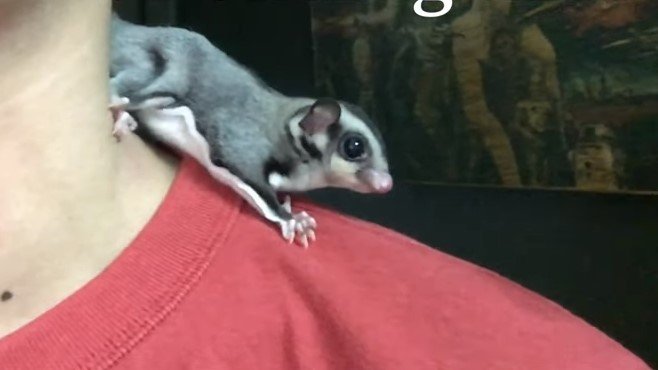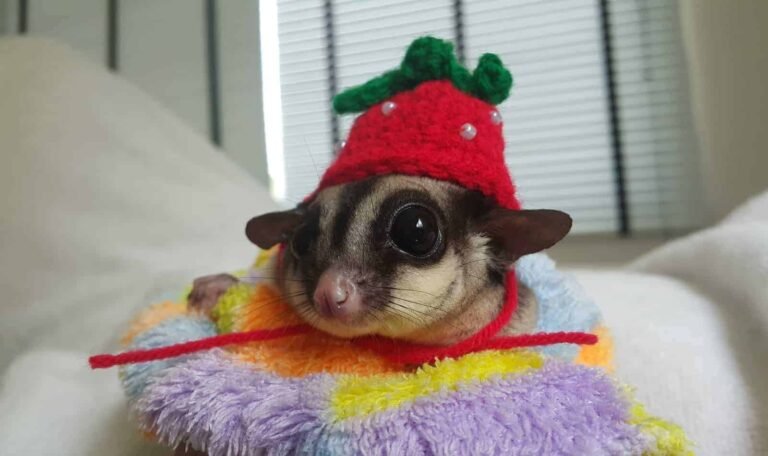How Important Is It To Have A Cage For Your Sugar Glider
How Important Is It To Have A Cage For Your Sugar Glider?
Are you a proud sugar glider owner? Then you know how important it is to provide them with a safe and secure environment. But just how crucial is having a cage for your furry friend? Let’s delve into the significance of this essential accessory.
A good cage not only keeps your sugar glider contained but also prevents them from escaping or getting injured. It serves as their own personal space, allowing you to monitor their health and behavior closely. Moreover, a dedicated cage provides them with an area to sleep, eat, and play comfortably.
There are various options available in the market, including commercial cages designed specifically for small animals like sugar gliders. While these cages have their advantages and disadvantages, the ultimate goal remains the same – ensuring your pet’s well-being.
So why take chances? By providing your sugar glider with a suitable cage, you can ensure their safety while enjoying peace of mind. After all, nothing beats seeing your little companion happy and thriving in their cozy abode.
So let’s dive in and give your adorable pet the home they deserve!
Sugar Glider Cage Requirements and Essentials
Spacious Living for Climbing Fun
Sugar gliders are active creatures that love to climb, glide, and explore their surroundings. That’s why it’s crucial to provide them with a spacious cage that allows them to engage in their natural behaviors. Look for a cage with ample vertical space, as sugar gliders love to climb and jump between different levels. A multi-level cage with platforms, ramps, and branches will keep your furry friend entertained for hours. Remember, the more room they have to stretch their wings and show off their acrobatic skills, the happier they’ll be.
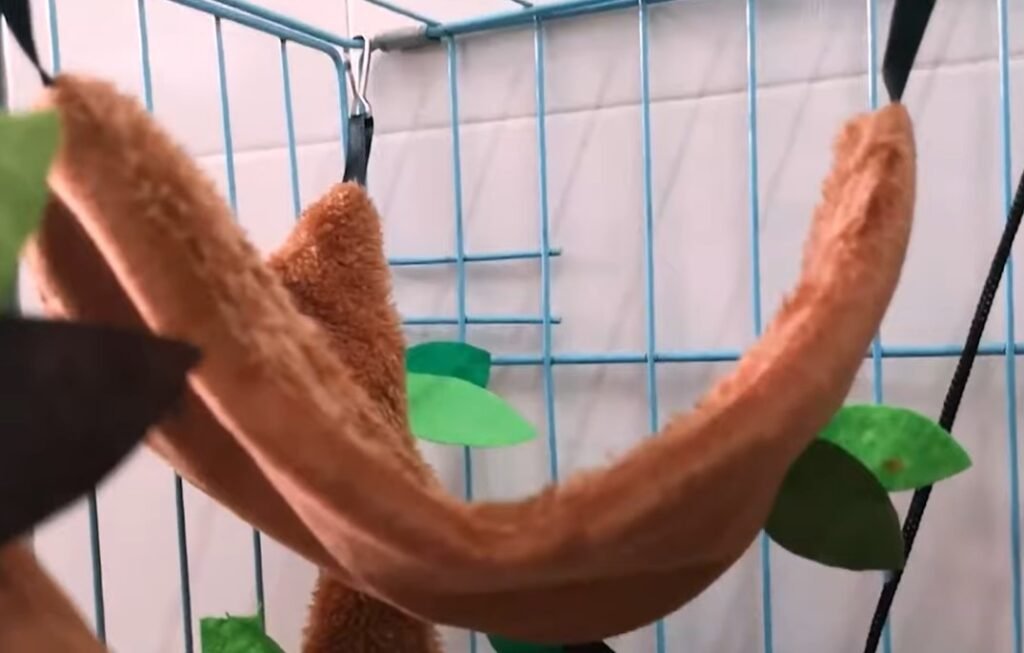
Wire Spacing: Escape-Proof yet Well-Ventilated
When selecting a cage for your sugar glider, wire spacing is an essential factor to consider. The gaps between the wires should be small enough to prevent any chance of escape or injury but large enough to allow proper ventilation. Aim for wire spacing no wider than 0.5 inches (1.27 cm) so that your little glider can’t squeeze through or get stuck between the bars. This ensures their safety while also allowing fresh air circulation within the enclosure.
Solid Flooring: Protecting Those Tiny Feet
To avoid foot injuries and discomfort, it’s crucial to choose a cage with solid flooring for your sugar glider. Wire mesh or grates might seem convenient for cleaning purposes, but they can pose risks to your pet’s delicate paws. Opt for cages with solid plastic or metal bottoms instead. This provides a stable surface that won’t cause harm or discomfort during playtime or rest.
Easy Access Doors: Cleaning Made Simple
Keeping your sugar glider’s habitat clean is vital for their health and well-being. That’s why having multiple access doors in the cage is highly beneficial. These doors make it easier to reach every corner of the enclosure when cleaning time rolls around.
Setting up the perfect sugar glider cage: tips and considerations
Choose a suitable location for your sugar glider’s cage
One of the most important factors to consider is the location. Sugar gliders are sensitive creatures, so it’s crucial to choose a spot that provides them with a comfortable environment. Here are some key points to keep in mind:
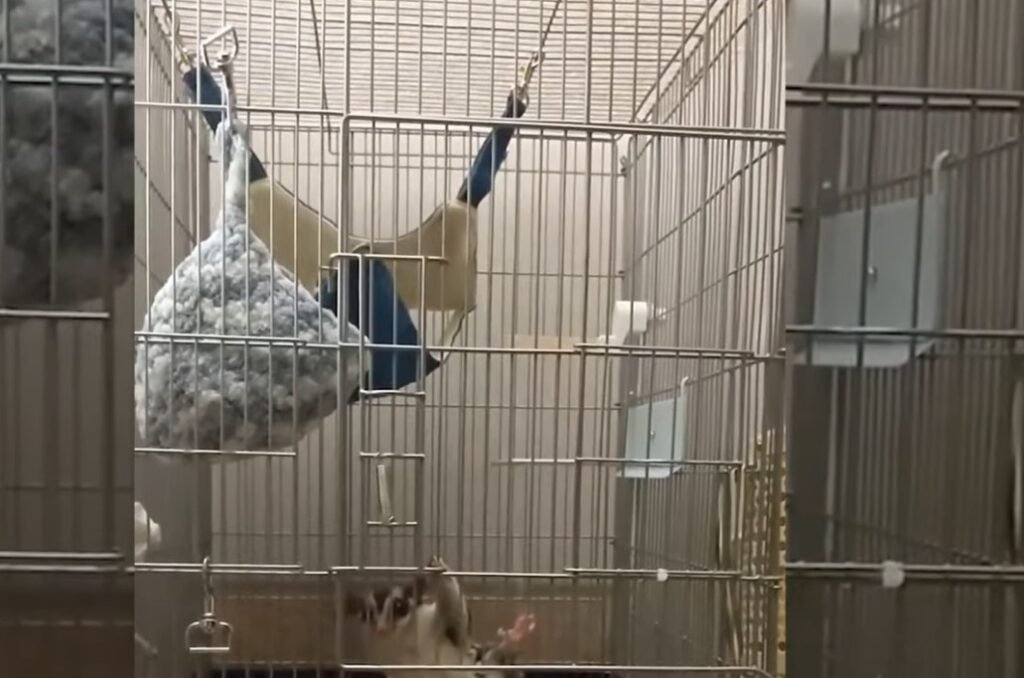
- Avoid drafts, direct sunlight, and loud noises: Sugar gliders thrive in stable conditions, so make sure to place their cage away from areas with drafts or direct sunlight. Also, keep them away from noisy appliances or rooms where there is constant commotion.
Provide optimal temperature and humidity levels
Maintaining the right temperature and humidity within your sugar glider’s cage is vital for their well-being. These small marsupials are native to tropical regions, so replicating those conditions will help keep them happy and healthy. Consider these aspects when setting up their habitat:
- Temperature control: Sugar gliders prefer temperatures between 70°F and 90°F (21°C – 32°C). Ensure that the room temperature remains within this range.
- Humidity levels: Aim for humidity levels around 50% – 70%. You can achieve this by using humidifiers or placing water dishes strategically near heat sources.
Choose an appropriately sized cage
The size of the cage plays a significant role in ensuring your sugar gliders have enough space to move around comfortably. Keep these points in mind when selecting the right size:
- Consider the number of sugar gliders you have: If you have multiple sugar gliders, opt for a larger enclosure that allows each of them enough room to glide, climb, and play.
- Vertical space matters: Sugar gliders love climbing and exploring. Look for cages with multiple levels or add branches and platforms inside their habitat.
Ensure proper ventilation
Good ventilation is crucial for your sugar glider’s respiratory health.
Creating a Stimulating Environment: Furnishings, Toys, and High-Placed Items
Branches and Ropes for Climbing and Exercise
Sugar gliders are active little animals that love to climb and explore their surroundings. To create a stimulating environment for your furry friends, include branches or ropes in their cage. These additions provide opportunities for climbing and exercise, keeping them physically engaged and preventing boredom. You can find wooden branches specifically designed for sugar glider cages at pet stores or online retailers.
Various Toys to Keep Them Mentally Stimulated
Just like humans, sugar gliders need mental stimulation to stay happy and healthy. Offering a variety of toys is essential to keep their minds sharp. Consider providing cloth toys that they can chew on or play with, as well as interactive toys that challenge their problem-solving skills. Look for products specifically designed for sugar gliders to ensure they are safe and suitable for these little babies.
Hammocks or Pouches at Different Heights for Resting Spots
Sugar gliders love cozy resting spots where they can curl up and take naps during the day. By placing hammocks or pouches at different heights within the cage, you create comfortable resting spots that mimic their natural habitat. These elevated areas also provide a sense of security for your pets while allowing them to observe their surroundings from above.
Platforms or Shelves to Create Additional Levels in the Cage
To maximize vertical space in your sugar glider’s cage, consider installing platforms or shelves. These additions create additional levels within the enclosure, giving your pets more room to explore and play. Sugar gliders enjoy jumping between different levels, simulating their natural behavior in the wild. Make sure the platforms or shelves are securely attached to avoid any accidents.
By incorporating these furnishings, toys, and high-placed items into your sugar glider’s cage, you provide them with an enriching environment that promotes physical and mental well-being.
Promoting comfort and variety: multiple nest pouches and suitable bedding
Mimicking natural nesting habits with multiple nest pouches
Sugar gliders are nocturnal animals that spend most of their time sleeping during the day. To ensure their comfort and well-being, it is important to provide them with suitable nesting options. Mimicking their natural nesting habits can help create a stress-free environment for these small animals.
One way to achieve this is by providing multiple nest pouches in their cage. Sugar gliders are known for creating nests in tree hollows in the wild, so having several pouches available allows them to choose a cozy spot that suits their preference. These pouches can be made of cloth or bought from pet stores specifically designed for small animals like sugar gliders.
Opting for soft bedding materials
Choosing the right bedding material is crucial for the health and comfort of your sugar glider. Soft materials like fleece or shredded paper make excellent choices as they provide a warm and cozy surface for your pet to rest on. The softness of these materials mimics the natural feel of leaves or bark found in their natural habitat.
On the other hand, it’s important to avoid using cedar or pine shavings as bedding material. While these may seem like convenient options, they can release harmful chemicals that irritate your sugar glider’s respiratory system. Opting for safer alternatives ensures your pet’s well-being.
Regularly changing bedding for cleanliness
Maintaining cleanliness in your sugar glider’s cage is essential to prevent odor buildup and promote good hygiene. Regularly changing the bedding helps keep the enclosure fresh and comfortable.
To simplify this task, consider using removable cloth liners or disposable liners that can be easily replaced when soiled. This not only saves time but also ensures that your sugar glider always has a clean space to rest in.
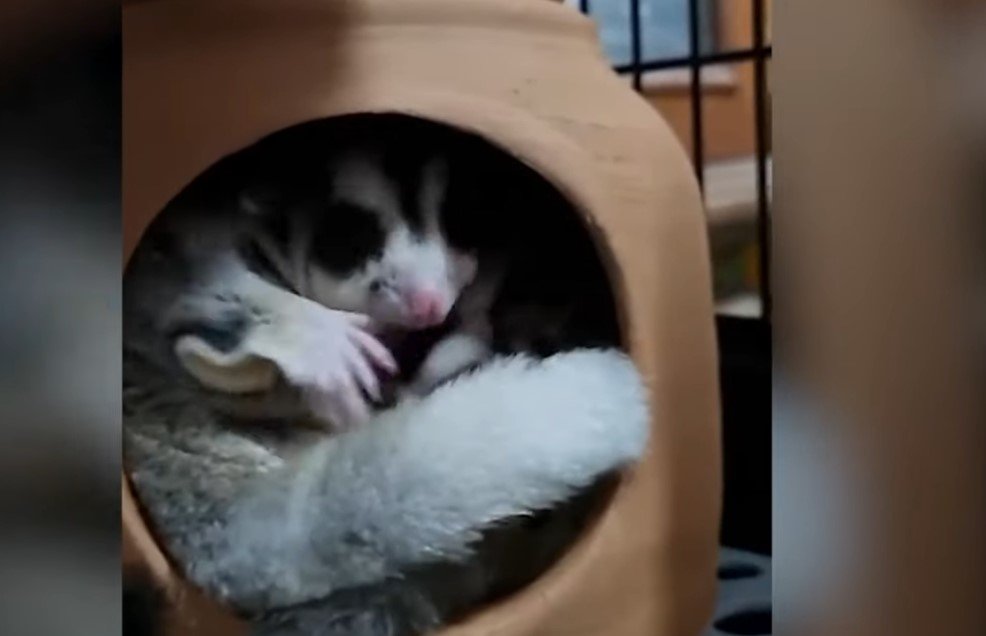
Optimal food and water dishes: meeting sugar gliders’ nutritional needs
Shallow Dishes for Easy Access
It’s important to use shallow dishes that are easily accessible for them. Sugar gliders have small mouths, so deep bowls may make it difficult for them to reach their food. By opting for shallow dishes, you ensure that they can comfortably access their meals without any hassle.
Separate Dishes for Different Food Groups
To provide a well-balanced diet for your sugar glider, it’s crucial to offer separate dishes for different food groups. This helps in meeting their nutritional needs effectively. You should have dedicated bowls or plates for fresh fruits and vegetables, protein sources, and water.
For fresh fruits and vegetables, consider offering a variety of options such as apples, berries, carrots, and leafy greens. This ensures they receive a diverse range of nutrients necessary for their overall health.
As for protein sources, you can include items like mealworms or crickets. These insects serve as an excellent source of essential proteins that aid in muscle development and maintenance.
Lastly, don’t forget to provide a clean dish with fresh water daily. Sugar gliders need constant access to clean drinking water just like any other pet.
Regular Cleaning Routine
Maintaining hygiene is vital. Clean the dishes daily to prevent bacterial growth that could potentially harm your furry friend’s health. Use mild soap and warm water while cleaning the containers thoroughly before refilling them with fresh food or water.
A Balanced Diet is Key
To ensure optimal nutrition for your sugar glider, offer a balanced diet consisting of various food items. Alongside fresh fruits and vegetables mentioned earlier, consider incorporating specialized sugar glider foods into their diet.
Brands like Exotic Nutrition offer specially formulated diets designed specifically for these adorable creatures.
Ensuring a happy and healthy home for your sugar glider
In conclusion, providing a cage for your sugar glider is crucial for their overall well-being. By meeting their specific requirements and creating a stimulating environment, you can ensure that your pet is happy and healthy.
Firstly, it is important to consider the cage requirements and essentials. This includes selecting an appropriate size cage, ensuring proper ventilation, and choosing materials that are safe for your sugar glider. Setting up the perfect sugar glider cage involves careful planning and consideration of various tips such as providing ample space for exercise and incorporating branches or perches for climbing.
Creating a stimulating environment is also essential. Furnishings, toys, and high-placed items allow your sugar glider to engage in natural behaviors like climbing and exploring. Providing multiple nest pouches and suitable bedding promotes comfort while offering variety in their living space.
Furthermore, paying attention to optimal food and water dishes is crucial in meeting the nutritional needs of sugar gliders. Ensuring a balanced diet rich in fruits, vegetables, proteins, and supplements will contribute to their overall health.
To summarize, having a suitable cage equipped with all the necessary elements ensures that your sugar glider has a comfortable home where they can thrive physically and mentally. By following these guidelines, you can provide an environment that supports their natural instincts while keeping them safe.
Take action now by implementing these recommendations to create the ideal habitat for your beloved sugar glider!
FAQs
1. How large should my sugar glider’s cage be?
Sugar gliders require cages that are at least 24 inches wide by 24 inches deep by 36 inches tall to allow ample room for exercise.
2.Can I use regular household materials to build my own cage?
It is not recommended to use regular household materials as they may not provide adequate safety or durability. It’s best to purchase a specifically designed sugar glider cage.
3.How often should I clean the cage?
It is recommended to clean the cage at least once a week, removing any waste, replacing bedding, and sanitizing surfaces to maintain hygiene.
4.What type of toys are suitable for sugar gliders?
Sugar gliders enjoy toys that encourage climbing, chewing, and mental stimulation. Options include branches, ropes, puzzle toys, and hanging pouches.
5.Can sugar gliders share a cage with other pets?
It is not advisable to house sugar gliders with other pets as they have specific social needs and may be at risk of injury from larger animals.

